
Ferdinand Rudio (born 2 August 1856 in Wiesbaden, died 21 June 1929 in Zurich) was a German and Swiss mathematician and historian of mathematics. [1] [2]

Ferdinand Rudio (born 2 August 1856 in Wiesbaden, died 21 June 1929 in Zurich) was a German and Swiss mathematician and historian of mathematics. [1] [2]
Rudio's father and maternal grandfather were both public officials in the independent Duchy of Nassau, which was annexed by Prussia when Rudio was 10. He was educated at the local gymnasium and Realgymnasium in Wiesbaden, and then in 1874 began studying at ETH Zurich, then known as the Eidgenössische Polytechnikum Zürich. His initial courses in Zurich were in civil engineering, but in his second year (under the influence of Karl Geiser) he switched to mathematics and physics. Finishing at Zurich in 1877, he went on to graduate studies at the University of Berlin from 1877 to 1880, earning his Ph.D. under the joint supervision of Ernst Kummer and Karl Weierstrass. Next, Rudio returned to ETH Zurich, earning his habilitation in 1881 and becoming at that time a privatdozent. He became an extraordinary professor at Zurich in 1885, and a full professor in 1889. [1] [3]
Rudio was one of the organizers of the first International Congress of Mathematicians (ICM) in 1897. He served as General Secretary of the congress, and as editor of the proceedings of the congress. [4] He was the editor of the quarterly journal of the Zürich Natural Sciences Society from 1893 until 1912, and was also president of the society. [1]
In 1919, the University of Zurich gave Rudio an honorary doctorate. By 1928, he was in poor health, and retired from his position at Zurich. He died a year later. [1]
Rudio's research ranged over group theory, abstract algebra, and geometry. His thesis research concerned the use of differential equations to characterize surface by the properties of their sets of centers of curvature, [1] and he was also known for the first proof of convergence of Viète's infinite product for π. [5] He also authored the textbook Die Elemente Der Analytischen Geometrie, in analytic geometry, published in 1908. [1]
Beginning in 1883, with a speech Rudio gave at a celebration of the centennial of Leonhard Euler's death, Rudio became interested in Euler's life and works. At the first ICM and again at a celebration in 1907 of Euler's 200th birthday, Rudio urged the compilation of a set of Euler's complete works. In 1909 the Swiss Society of Natural Sciences took up the project and appointed Rudio as editor. He finished two volumes of this project, and assisted in the editing of the next three. [1] He gave a talk Mitteilungen über die Eulerausgabe (news about the Euler edition) at the fifth ICM in Cambridge, England in August 1912. [6] By the time he retired as general editor of the series in 1928, 20 volumes of the series had been published of what would eventually be over 80 volumes. [2]
Other work in the history of mathematics by Rudio included the book Der Bericht des Simplicius über die Quadraturen des Antiphon und des Hippokrates (1902) on the ancient problem of squaring the circle, and a collection of biographies of mathematicians including Gotthold Eisenstein. [1]
Teubner Verlag published Rudio's 2-volume work, Die Elemente der analytischen Geometrie. Erster Theil: Die analytische Geometrie der Ebene (1888) and Die Elemente der analytischen Geometrie. Zweiter Theil: Die analytische Geometrie des Raumes (1901), which went through several editions over two decades. According to Percey F. Smith, the work was "deservedly popular in Germany." [7]
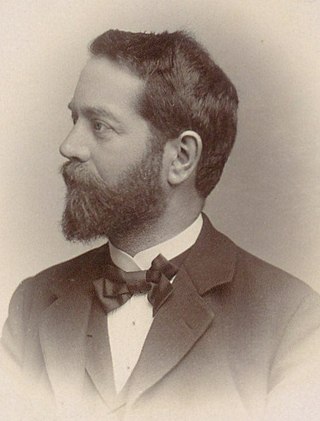
Christian Felix Klein was a German mathematician and mathematics educator, known for his work with group theory, complex analysis, non-Euclidean geometry, and on the associations between geometry and group theory. His 1872 Erlangen program, classifying geometries by their basic symmetry groups, was an influential synthesis of much of the mathematics of the time.
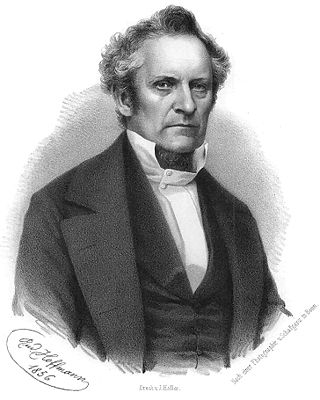
Julius Plücker was a German mathematician and physicist. He made fundamental contributions to the field of analytical geometry and was a pioneer in the investigations of cathode rays that led eventually to the discovery of the electron. He also vastly extended the study of Lamé curves.

Heinz Hopf was a German mathematician who worked on the fields of topology and geometry.
The International Congress of Mathematicians (ICM) is the largest conference for the topic of mathematics. It meets once every four years, hosted by the International Mathematical Union (IMU).

Paul Gustav Heinrich Bachmann was a German mathematician.
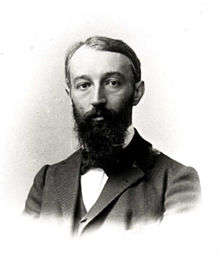
Eduard Study, more properly Christian Hugo Eduard Study, was a German mathematician known for work on invariant theory of ternary forms (1889) and for the study of spherical trigonometry. He is also known for contributions to space geometry, hypercomplex numbers, and criticism of early physical chemistry.

Ludwig Otto Hesse was a German mathematician. Hesse was born in Königsberg, Prussia, and died in Munich, Bavaria. He worked mainly on algebraic invariants, and geometry. The Hessian matrix, the Hesse normal form, the Hesse configuration, the Hessian group, Hessian pairs, Hesse's theorem, Hesse pencil, and the Hesse transfer principle are named after him. Many of Hesse's research findings were presented for the first time in Crelle's Journal or Hesse's textbooks.

Carl David Tolmé Runge was a German mathematician, physicist, and spectroscopist.

Karl Emanuel Robert Fricke was a German mathematician, known for his work in complex analysis, especially on elliptic, modular and automorphic functions. He was one of the main collaborators of Felix Klein, with whom he produced two classic, two-volume monographs on elliptic modular functions and automorphic functions.

Andreas Speiser was a Swiss mathematician and philosopher of science.

Roland Weitzenböck was an Austrian mathematician working on differential geometry who introduced the Weitzenböck connection. He was appointed professor of mathematics at the University of Amsterdam in 1923 at the initiative of Brouwer, after Hermann Weyl had turned down Brouwer’s offer.
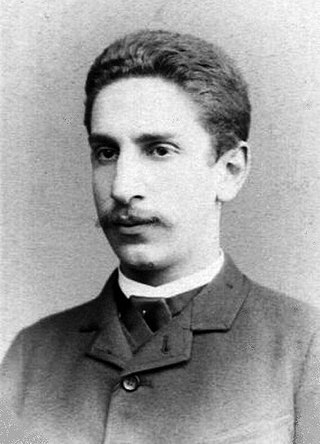
Gino Benedetto Loria was a Jewish-Italian mathematician and historian of mathematics.

Otto Wilhelm Fiedler was a German-Swiss mathematician, known for his textbooks of geometry and his contributions to descriptive geometry.

Maximilian Simon was a German historian of mathematics and mathematics teacher. He was concerned mostly with mathematics in the antiquity.
Friedrich Dingeldey was a German mathematician.
Reinhardt Kiehl is a German mathematician.
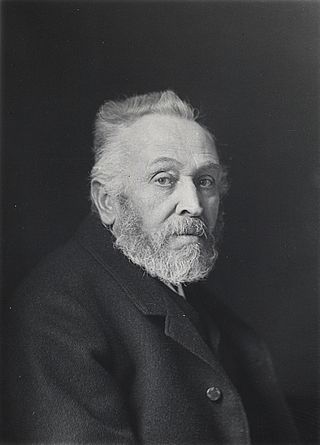
Johann Jakob Rebstein (1840–1907) was a Swiss mathematician and surveyor.

Carl Friedrich Geiser was a Swiss mathematician, specializing in algebraic geometry. He is known for the Geiser involution and Geiser's minimal surface.
Adolf Kiefer was a Swiss mathematician, working mainly on geometry.
Johann Jakob Burckhardt was a Swiss mathematician and crystallographer. He was an invited speaker at the International Congress of Mathematicians in 1936 in Oslo.